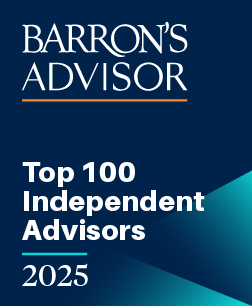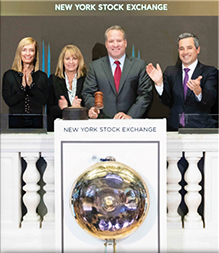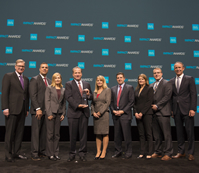We tend to worry about retirement quite a bit, and with good reason. There are a number of different risks that could eat into your hard-earned retirement savings. The average joe often thinks of these risks as one or more of the following: a market crash, crippling debt, rising healthcare costs, and poor overall planning from an early age. What people tend to forget, even when they hit all of their financial goals, is that you could outlive your nest egg. This overlooked concept is called longevity risk and it could have a significant impact on how you save for retirement.
Longevity is the extent to which a person outlives their life expectancy. Not a difficult definition to understand, right? Wrong, especially when it comes to the application of longevity to the financial planning process.
We live in a world that has seen notable improvements to life expectancy in the last 20 years, largely due to improvements in modern medicine. In 2013, the World Health Organization conducted a study from 1990 to 2012 that showed average life expectancy in the U.S. increased by two years. That’s an extra two years of costs you have to consider when you are developing your financial plan. The Stanford Center on Longevity reports that 2 in 3 pre-retiree men and half of pre-retiree women underestimate the life expectancy of a 65-year-old man and woman.
There is no way to calculate when you are going to die…if there were, that would be very disconcerting. However, based on certain information, your financial planner can calculate an estimated age to build your plan around. Information such as family history, current health, and lifestyle can help give an idea of what your life expectancy might be. From here, it’s determining a plan constructed with heavy emphasis on healthcare and lifestyle costs to determine what is the best plan of action moving forward for you and your family.
With the possibility of outliving your life expectancy, how can you prepare yourself financially? Many advisors will give you a range or “good rule of thumb” for how much income replacement you may need in retirement, but each situation is different depending on your retirement goals and lifestyle. To prevent your retirement principal from being affected by longevity, we recommend that you do not draw down 4% of your assets within a given year. Typically, we recommend building out a plan to age 90, unless health reasons determine otherwise.
One approach is to work your plan from the end point, ahem, death, to retirement with adherence to the guideline of not eroding your retirement principal or least a good portion of it. Ask yourself what amount would you be comfortable leaving in your estate at age 90 (or whatever your end date is). With that amount in mind, you can determine your game plan.
Let’s say that amount is $1,000,000. Using the 4% rule you can safely withdraw $40,000 per year. Sticking to that amount will leave you with $1,000,000 at the end and you will have outrun longevity. As you approach your last few years, you have the comfort of knowing you can tap this resource for its intended use – those unknown costs, mostly likely healthcare related.
So the question is can you live on that generated income using the 4% rule to prevent outliving your assets? To get your answer it’s essential to examine your lifestyle i.e. your income and expenses heading into retirement. Obviously, living longer means more health care costs down the road - you can expect that. But there are other expenses to account for like insurance costs, hobbies, travel, vehicles, and other costs that may affect your day-to-day life.
The good news is there are many ways to reduce these expenses, which at the same time, keep pace with the changes in your life style without sacrificing it. One is to downsize your home. Moving from a larger home and consolidating could drastically reduce your maintenance expenses and utilities. Another is to go down to one vehicle in retirement. The amount you drive will become less and less and let’s face it, your ability to drive will inevitably degrade. On the income side, strongly consider delaying social security. Taking benefits at a later age will get you a higher monthly benefit payment there by supplementing the withdrawals from their savings. Even exploring part-time work can keep you active and possibly provide some enticing perks like health insurance to help out with those extra healthcare costs in your golden years.
Even an extra few years of life can drastically change the costs needed to maintain a comfortable living in retirement. Getting with a professional financial planner is good start to go over your goals and longevity concerns and develop a detailed overall strategy that fits your personal needs. You will get some great ideas, and most importantly a plan to outrun longevity.
Click here to read more of my RetireMint articles. Follow me on Twitter or Linkedin.
This document is for educational and informational purposes only and does not constitute an advertisement or solicitation of any securities or investment services provided Mainstay Capital Management, LLC (“MCM”). This document should not be construed as investment, tax, or legal advice, or a solicitation, or a recommendation to engage in any specific strategy. MCM is an independent investment adviser registered with U.S. Securities and Exchange Commission. MCM specializes in workplace savings plan portfolio management and retirement planning advice for active employees and retirees. This document was prepared by MCM primarily based on data collected and analyzed by MCM. The opinions expressed herein are those of MCM alone and are for background purposes only. MCM does not purport the analysis to be full or complete or to constitute investment advice and should not be relied on. In addition, certain information contained herein or utilized to draw the conclusions contained herein has been provided by, or obtained from, third party sources. While MCM believes that such sources are reliable, it cannot guarantee the accuracy of any such information and does not represent that such information is accurate or complete. All materials and information are provided “as is” without any express or implied warranties by MCM. MCM charges its fee based on a percentage of assets under management, which creates an incentive and conflict of interest to increase assets in that account. Furthermore, MCM has two different fee schedules, and therefore has a conflict of interest when assets or accounts move from the lower fee schedule to the higher fee schedule. Opinions expressed are subject to change without notice and are not intended as investment advice or to predict future performance. Consult your financial professional before making any investment decision. Please see MCM’s Form ADV Part 2A and Form CRS for additional information.







